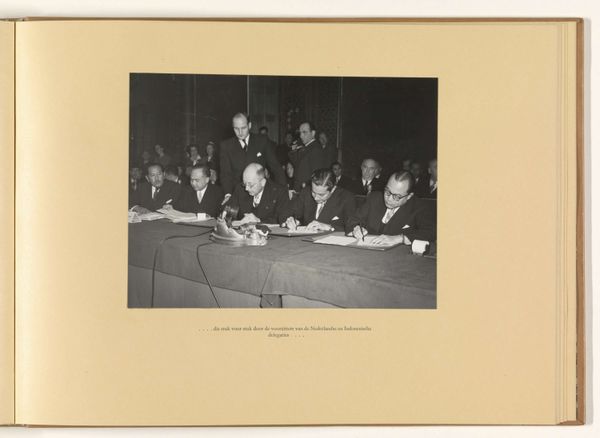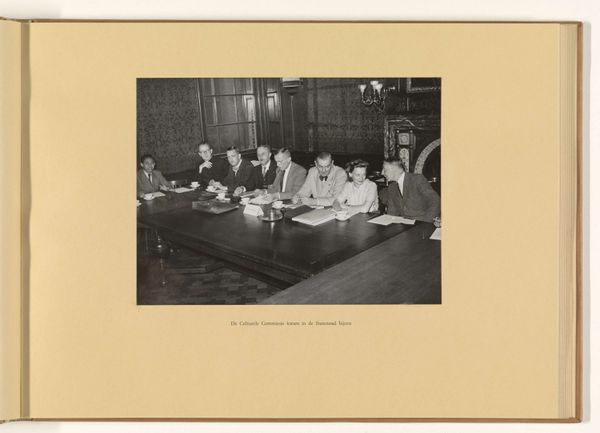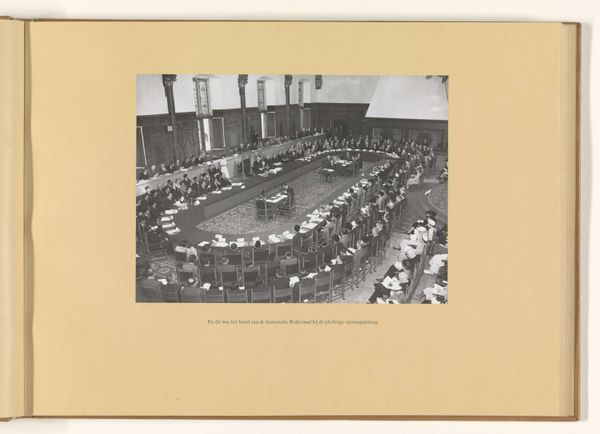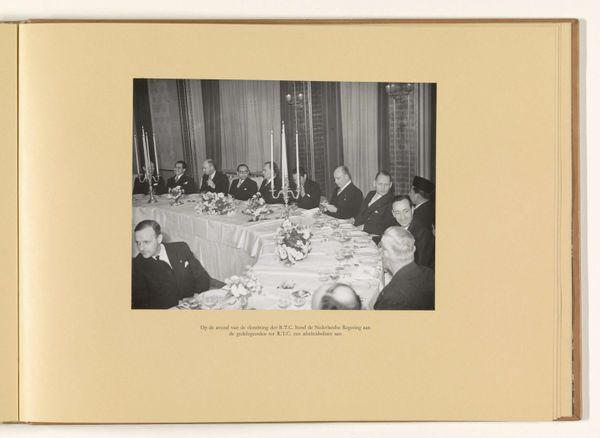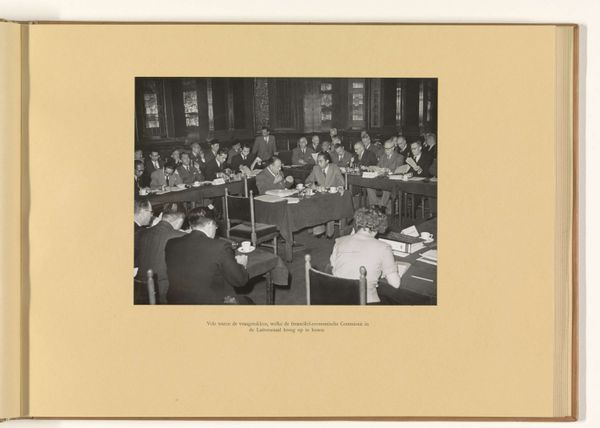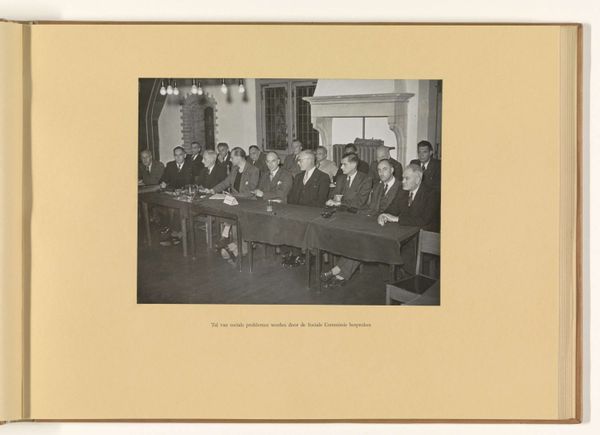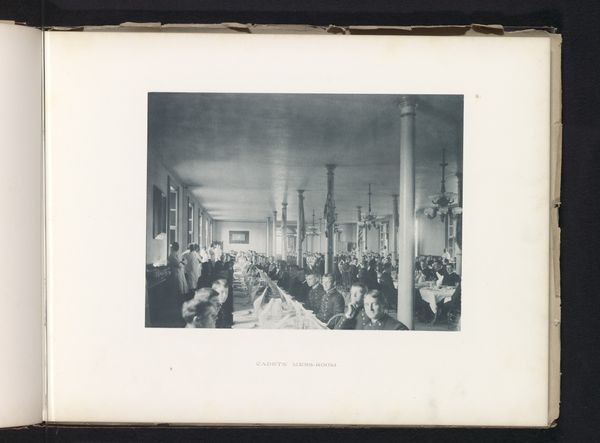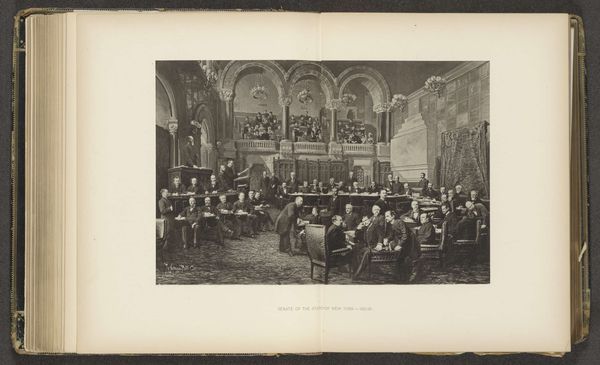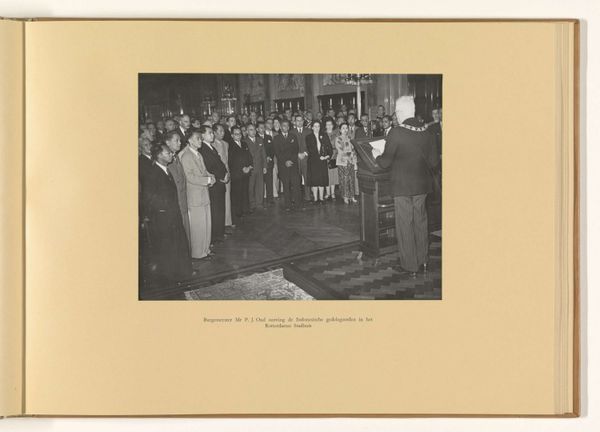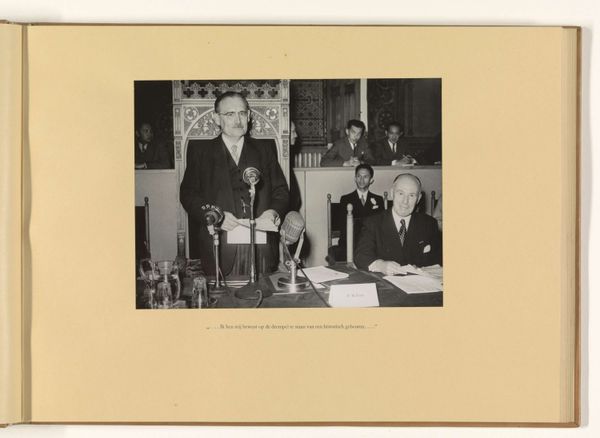
" .... dat deze Conferentie moge strekken tot eer en zegen voor Indonesië en het uitgangspunt moge blijken van een nieuwe ontwikkeling, waarin op het verbreken der oude verhoudingen een vrije en voor beide volken vruchtbare samenwerking moge volgen .... " Possibly 1949
0:00
0:00
print, photography
#
portrait
# print
#
photography
#
photojournalism
#
group-portraits
#
history-painting
Dimensions: height 168 mm, width 227 mm, height 292 mm, width 400 mm
Copyright: Rijks Museum: Open Domain
Editor: So, this photo print, possibly from 1949, is attributed to the Regeringsvoorlichtingsdienst, with a rather long title in Dutch. It depicts a formal gathering. It has this very staged, official feeling, almost theatrical with everyone arranged in tiers. What strikes you about this image? Curator: This photograph offers a fascinating glimpse into a specific historical moment and the construction of national narratives. Considering it was produced by the government information service, how do you think that impacted the image’s composition and intent? Editor: Well, knowing it's from a government source, it feels… curated, right? The arrangement feels designed to project authority and perhaps unity, even if the reality was more complex. It makes you wonder what was *not* shown, and who decided what got included. Curator: Precisely. And think about the political context of 1949 – the Indonesian National Revolution was in full swing. This image likely aims to depict the Dutch government in a particular light during those tumultuous times. It suggests an effort towards dialogue and progress. The staged formality underscores the gravity of the situation and perhaps, attempts to legitimize a certain narrative. Editor: So, the photo functions less as a straightforward document and more as a form of… propaganda, perhaps? Trying to shape public perception? Curator: The term propaganda is loaded, but it is productive to think about how all images carry a perspective. This image likely aims to frame Dutch-Indonesian relations in a specific way, obscuring the power imbalances and the ongoing conflict. Notice the composition—the figures at the table dominate the foreground, visually emphasizing their importance. Consider whose perspectives were being amplified, and whose were being omitted. Editor: I hadn't thought about it that way before. It’s almost like the photograph itself is an active participant in the historical narrative, trying to influence its outcome. Curator: Exactly. It makes you consider the politics embedded within the very act of image-making and distribution. Analyzing the photograph helps to clarify the cultural landscape of that time and consider the different meanings and values associated with freedom and progress in the period. Editor: This image is clearly doing a lot more work than I initially thought. Thanks for pointing out those historical nuances.
Comments
No comments
Be the first to comment and join the conversation on the ultimate creative platform.

